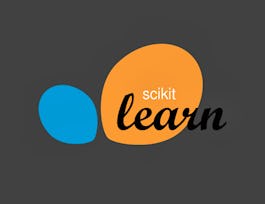In this 4 week course, you will learn about Smart Beta products. Smart betas products have the characteristics of both passive investment(having predetermined rules) and active investments(allows for factor investment). We will walk through the creation mechanisms behind different smart beta products and recreate some of them using R programming. Then we will apply machine learning methods. Data processing, overfitting prevention techniques will be covered. Finally we will try to create an improved multi-factor model using CART, bagging, boosting and ensemble methods. Students are expected to have listened to my first and second course 'The Fundamental of Data-Driven Investment' and 'Using R for Regression and Machine Learning in Investment', or having equivalent knowledge in investment concepts and a firm grasp on R programming.



Expérience recommandée
Compétences que vous acquerrez
- Catégorie : R Programming
- Catégorie : Applied Machine Learning
- Catégorie : Smart Beta
Détails à connaître

Ajouter à votre profil LinkedIn
1 devoir
Découvrez comment les employés des entreprises prestigieuses maîtrisent des compétences recherchées


Obtenez un certificat professionnel
Ajoutez cette qualification à votre profil LinkedIn ou à votre CV
Partagez-le sur les réseaux sociaux et dans votre évaluation de performance

Il y a 4 modules dans ce cours
Building on the concepts learned in previous courses 'The Fundamental of Data-Driven Investment' and 'Using R for Regression and Machine Learning in Investment', this course will cover 'Smart beta'. Smart betas products have the characteristics of both passive investment(having predetermined rules) and active investments(allows for factor investment). Smart beta products' investment mechanisms are open to the public, so we will recreate a MSCI smart beta product in R. Follow along the step-by-step reconstruction of the MSCI Enhanced Value Index and create your own smart beta portfolio.
Inclus
5 vidéos1 devoir
In order to effectively utilize machine learning in investment, it is important to understand the various characteristics of data. This module covers how to check the prediction accuracy of a machine learning model and prevent overfitting. Get hands on experience in R to manipulate data into a form suitable for machine learning models from regression models to classification trees.
Inclus
4 vidéos
The asset selection method based on a score derived from a benchmark index has the problem that the selected assets do not reliably capture underlying information. To solve this problem, a non-traditional method, namely machine learning is used to create an improved multi-factor approach. Familiarize yourself with CART(Classification and Regression Tree), bagging, boosting and ensemble methods to enhance your smart beta portfolio in R.
Inclus
4 vidéos
In this final module, we wrap up the discussion by creating a multifactor model applying all the knowledge we have learned so far. Investors have taken a steady interest in multifactor models that take into account the cyclicality of factors. Further, we expand the discussion into the use of factors in bond investment and a new method of active factor allocation.
Inclus
5 vidéos
Offert par
Recommandé si vous êtes intéressé(e) par Finance

Coursera Project Network

Coursera Project Network
Pour quelles raisons les étudiants sur Coursera nous choisissent-ils pour leur carrière ?





Ouvrez de nouvelles portes avec Coursera Plus
Accès illimité à 10,000+ cours de niveau international, projets pratiques et programmes de certification prêts à l'emploi - tous inclus dans votre abonnement.
Faites progresser votre carrière avec un diplôme en ligne
Obtenez un diplôme auprès d’universités de renommée mondiale - 100 % en ligne
Rejoignez plus de 3 400 entreprises mondiales qui ont choisi Coursera pour les affaires
Améliorez les compétences de vos employés pour exceller dans l’économie numérique
Foire Aux Questions
Access to lectures and assignments depends on your type of enrollment. If you take a course in audit mode, you will be able to see most course materials for free. To access graded assignments and to earn a Certificate, you will need to purchase the Certificate experience, during or after your audit. If you don't see the audit option:
The course may not offer an audit option. You can try a Free Trial instead, or apply for Financial Aid.
The course may offer 'Full Course, No Certificate' instead. This option lets you see all course materials, submit required assessments, and get a final grade. This also means that you will not be able to purchase a Certificate experience.
When you purchase a Certificate you get access to all course materials, including graded assignments. Upon completing the course, your electronic Certificate will be added to your Accomplishments page - from there, you can print your Certificate or add it to your LinkedIn profile. If you only want to read and view the course content, you can audit the course for free.
You will be eligible for a full refund until two weeks after your payment date, or (for courses that have just launched) until two weeks after the first session of the course begins, whichever is later. You cannot receive a refund once you’ve earned a Course Certificate, even if you complete the course within the two-week refund period. See our full refund policy.






